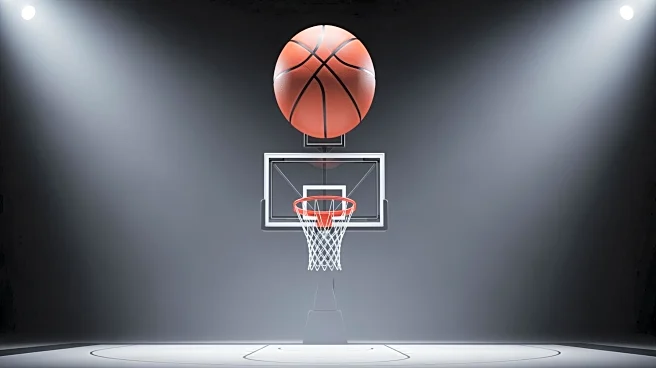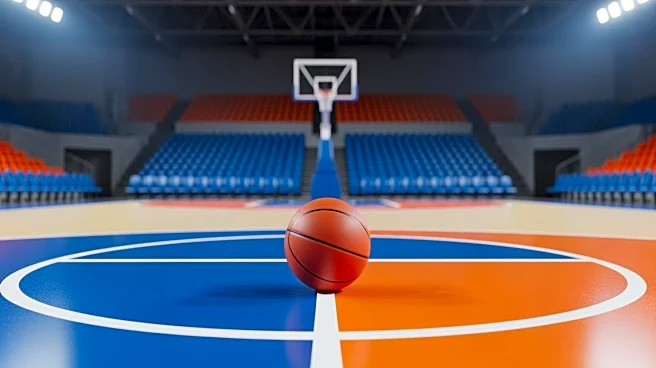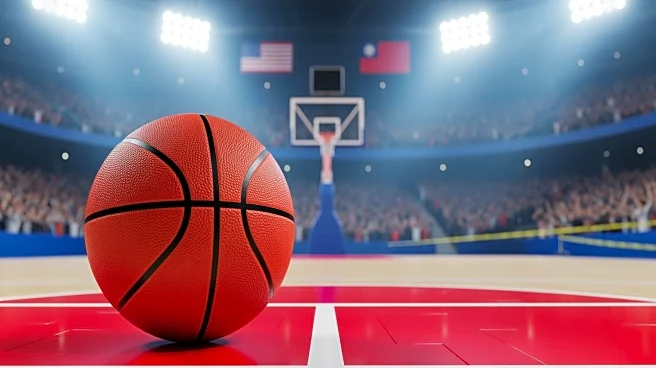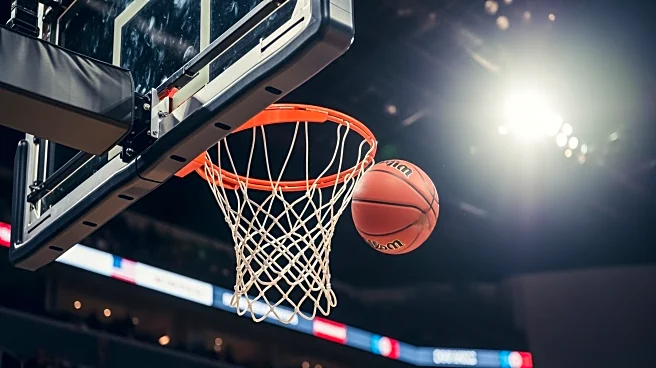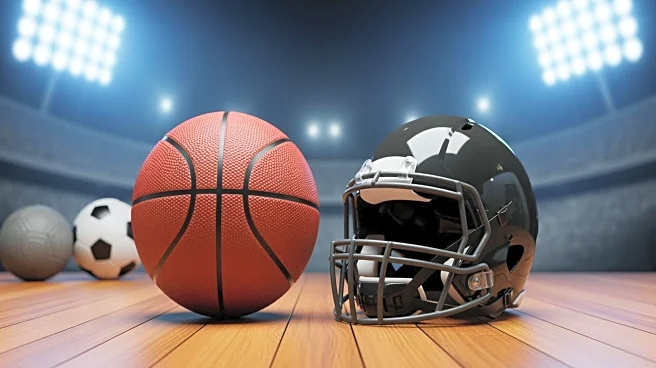What's Happening?
Olivier Rioux, a 7-foot-9 center for the Florida Gators, made history by becoming the tallest player ever to participate in a college basketball game. Rioux, a 19-year-old redshirt freshman from Canada,
debuted during Florida's 104-64 victory over North Florida. Despite not touching the ball during his brief time on the court, Rioux's presence drew significant attention from fans and players alike. Florida coach Todd Golden decided to play Rioux late in the game, responding to chants from the crowd. Rioux, who is taller than former NBA players Gheorghe Muresan and Manute Bol, had previously opted to redshirt last season to develop his skills further. His debut was met with enthusiasm from teammates and fans, marking a memorable moment in college sports history.
Why It's Important?
Rioux's debut as the tallest player in college basketball history highlights the unique challenges and opportunities faced by exceptionally tall athletes. His presence on the court not only draws attention to the Florida Gators but also emphasizes the importance of inclusivity and diversity in sports. Rioux's decision to redshirt last season to focus on skill development underscores the dedication required to succeed at high levels of competition. His debut could inspire other athletes facing similar challenges, demonstrating that perseverance and hard work can lead to significant achievements. Additionally, Rioux's participation may influence recruitment strategies and the dynamics of college basketball, as teams consider the advantages and limitations of having extraordinarily tall players.
What's Next?
Rioux's future in college basketball will likely involve more opportunities to play, especially in games where Florida has a comfortable lead. Coach Golden has indicated that Rioux will continue to play sparingly, primarily in blowout situations. As Rioux gains more experience, he may become a more integral part of the team's strategy, particularly in matchups where his height can be a significant advantage. The attention surrounding Rioux's debut may also lead to increased media coverage and fan interest in Florida's games, potentially boosting the team's profile and attracting more spectators. Rioux's development will be closely watched by fans and analysts, eager to see how his unique attributes will impact his performance and the team's success.
Beyond the Headlines
Rioux's debut raises questions about the role of physical attributes in sports and how they can be both an advantage and a challenge. His height, while beneficial in certain aspects of basketball, also presents unique obstacles, such as mobility and coordination. The support Rioux received from fans and teammates highlights the cultural significance of sports as a platform for celebrating diversity and overcoming barriers. His journey may inspire discussions about the ethical considerations of recruiting athletes based on physical characteristics and the importance of providing them with the necessary resources to succeed. Rioux's story could also lead to broader conversations about the representation of athletes with atypical physiques in media and sports.
